
When contacting us by e-mail, correspondents are asked to include their name and full postal address and, when providing information, to quote exact book and magazine sources. The word ‘chess’ needs to appear in the subject-line or in the message itself.
| First column | << previous | Archives [44] | next >> | Current column |
A political analogy by Sir William Jones, in a letter dated 15 May 1780 to William Adams:
‘... I, from my early youth, have considered our constitution as analogous to a game at chess, where the king is respected and preserved from all danger, but where the principal strength consists in the pawns, or people, although the pieces, or nobles, have also no small share in the mixed system.’
Source: The Life and Mind of Oriental Jones by Garland Cannon (Cambridge, 1990), page 364.
The illustration below comes from volume one of Letters of Sir William Jones (London, 1821):

Olimpiu G. Urcan (Singapore) notes in the UCLA Library a fine photograph of Mr and Mrs Piatigorsky watching Larsen and Fischer in play (Los Angeles Times, 16 July 1966).
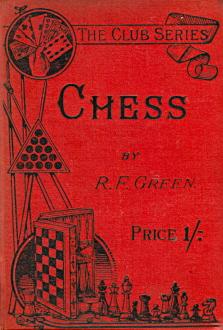
We are seeking biographical information on Robert Frederick Green, sometime editor of the BCM and the author of a monograph Chess (London, 1889) which has been reprinted and reissued innumerable times (and even recently). The text was also included in volume one of The Handbook of Games (London, 1890). In addition, Green was the author of Solo Whist (London, 1894).
Jeremy Gaige’s Chess Personalia (Jefferson, 1987) listed Green as born in Liverpool on 9 May 1856, but what became of him?
Pete Tamburro (Morristown, NJ, USA) reports that Richard W. Wayne was a director of the United States Chess Federation in the 1940s and lived in Ventnor City, NJ. He was the tournament director of the City of Ventnor Invitation Tournament (8-16 July 1939), in which Fred Reinfeld participated. A victory by Wayne against G. Ross in the 1940 Ventnor City Chess Club Championship was given in the April 1940 issue of Jersey Chess. An item by Robert Durkin on page 3 of the April 1974 Atlantic Chess News stated that Wayne was then aged 80 and ‘was a motorcycle test driver in his younger days, as well as a Sgt. major in the British Army’.
We note that a small, dark photograph of him appeared on page 2 of the Ventnor City, 1940 tournament book:
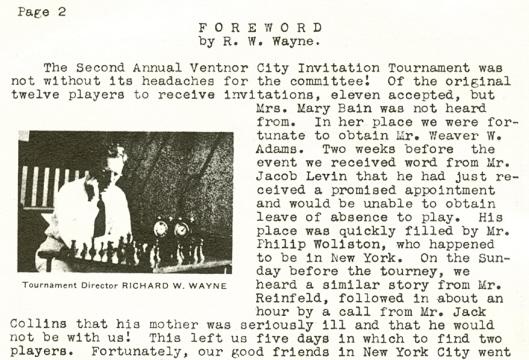

Mate in ten
This (simple) problem, from page 9 of The Austral, 25 August 1928, was given in C.N. 1198, but we are still unable to say who composed it. Does any reader know?
From Robert John McCrary (Columbia, SC, USA):
‘When did the rules first specify that White always moves first? The earliest reference I have found is on page 126 of the New York, 1880 tournament book, where rule 9 reads:
“In each round the players shall have the first move alternately; in the first game it shall be determined by lot. The one having the move, in every case, is to play with the white pieces.”
Prior to that, it had gradually become conventional, over a number of years, to have White move first in published analysis, and by about 1862 to have White move first in all published games. But it was evident that players could in many cases choose Black when they had the first move, even if the published game-score indicated that White had moved first.’
Many writers ascribe to Capablanca the axiom ‘Good players are always lucky’. How far back can the remark be traced, attributed to the Cuban or to anyone else?
Danny Ross Lunsford (Atlanta, GA, USA) draws attention to an item on page 51 of the February 1905 Wiener Schachzeitung which relates a discovery by Shinkman that the two knights can give mate in 55 moves if a 65th square is added, under e1.

To our list of writers of books on chess and bridge (J.C.H. Macbeth, Emanuel Lasker, P. Anderton, S. Novrup and M. Golmayo) we add Paul Lamford, who has authored a number of works on both games.
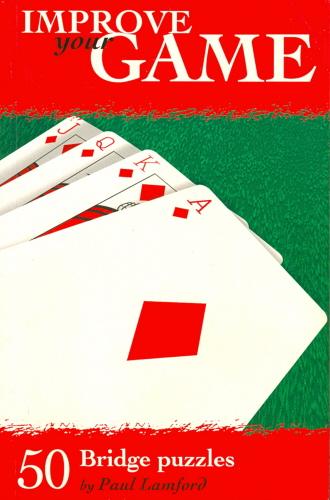
With regard to E.A. Znosko-Borovsky’s non-chess
writings, Louis Morin (Montreal, Canada) points out the eScholarship
Editions webpage, which lists:
‘Znosko-Borovskii, E. A. “Bashennyi teatr,” Apollon, no. 8 (1910).
Znosko-Borovskii, E. A. Russkii teatr nachala XX veka . Prague: Plamia, 1925.’
From Isaac Kashdan’s Introduction on page xii of First Piatigorsky Cup (published in Los Angeles, 1965):
‘Keres first became ill on an evening when he had two adjourned games to complete. He had decisive advantages against both Benko and Panno, but each had planned to continue. When word came that Keres would be unable to play, both opponents promptly resigned to him. This may be the first case in chess history that a player asked for a postponement and was rewarded with two points.’
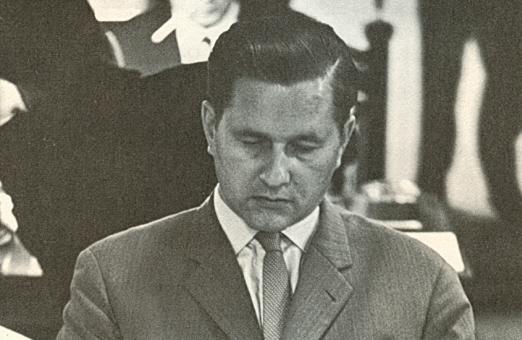
Paul Keres (page 97 of the tournament book)
From W.D. Rubinstein (Aberystwyth, Wales):
‘The 1891 United Kingdom census lists him as aged 34, born circa 1857, and living at 12 Radnor Street, West Derby, Liverpool. He was described as a “commercial correspondent – editor – author” and was married to Annie. The 1901 census gives his address as 12 Victoria Road, Seaforth, West Derby, Lancashire, and he is referred to as the “Secretary of a limited company”.’
Marc Hébert (Charny, Canada) quotes from page 38 of Thomas Frère and the Brotherhood of Chess by Martin Frère Hillyer (Jefferson, 2007):
‘During the First American Chess Congress, Löwenthal sent a telegram from London telling the players of the United States that the chess clubs of London had accepted a new rule that White always moved first.’
Michael McDowell (Westcliff-on-sea, England) writes:
‘C.N. 5449 reminded me of a position in a translation of the preface to Troitzky’s 1934 collection of his studies, on page 742 of issue 119 (January 1996) of EG.’
Troitzky wrote:
‘Chigorin also reacted favourably to another little idea of mine: to add four squares to the normal chessboard, one each behind the starting squares of the kings and queens (d0, e0, d9 and e9). This would allow two knights to checkmate a lone king as in the diagram.’
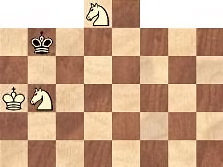
A number of C.N. items have referred to Miron James Hazeltine (1824-1907), and particularly in connection with his book Brevity and Brilliancy in Chess (New York, 1866) and his relations with James A. Leonard. A profile on pages 1-2 of the January 1894 BCM stated:
‘Mr Hazeltine invented “Miron’s Odds”, for beginners beaten too often at the rook. Remove K’s B and Kt, then castle and bid the neophyte, “Come on, Macduff!” etc. He also brought into use the “em dash” (–) for “to” in printing games; also “2d and 3d” for doubled and tripled pawns – both typographical improvements. ...
Miron compiled the practical part of Marache’s Manual of Chess and was employed by Mr De Witt to complete Morphy’s Match Games, begun by Mr Stanley.’
A very similar feature was published on page 7 of the June 1897 American Chess Magazine.
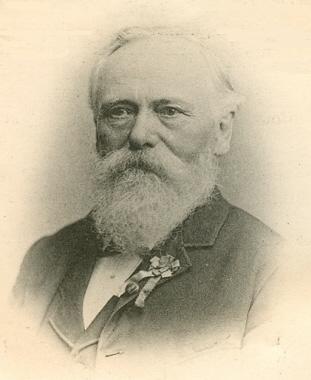
Miron James Hazeltine
Below is part of Samuel Loyd’s assessment of Hazeltine on page 1630 of the Scientific American Supplement, 15 December 1877:
‘In fact, an extended notice of our old friend would almost necessitate an autobiography of ourself, for our earliest recollections of the game are associated with his pleasant instructions at the odds of a queen, and the boyish pride we felt when he finally passed upon our first problem as worthy of publication. Our old intimacy has survived the various degrees of reduced odds, until the question of strength would be decided a shade in our favor, and the master submitted problematical questions to the judgment of the pupil.
Mr Hazeltine is most lavish in his admiration for the work of others, but has never essayed to compose a problem nor to acquire fame as a player; he has been satisfied to earn for himself the widespread reputation of an honest, liberal and enthusiastic worker for the cause of chess, who is beloved by the entire fraternity.’
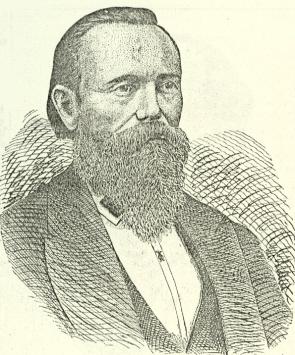
Loyd’s sketch of Hazeltine in the Scientific American Supplement
Below, from our collection, is the signed title page of Hazeltine’s copy of Chess: A Poem, in Four Parts (London, 1854):

In the present item, however, we wish to focus on Miron Hazeltine’s wife (whose pseudonym was Phania). From page 33 of the February 1905 American Chess Bulletin:
‘Mrs Hazeltine, whose maiden name was Hannah M. Bryant, a relative of the late William Cullen Bryant, is a poet of no mean ability and she has steadily striven to advance the cause of the husband’s favorite game through her pretty sentiments quaintly set in rhyme. The December number of the Bulletin contained a special contribution from this gifted admirer of Caissa. Mr and Mrs Hazeltine celebrated the 50th anniversary of their marriage on 20 July 1903.’

From page 133 of the December 1904 American Chess Bulletin
In announcing Miron Hazeltine’s death, the April 1907 issue of the Bulletin (page 81) stated:
‘In a spirit of resignment and with abiding faith, she writes thus of her husband’s decease: “After traveling as partners in the rough ways of life for almost 54 years, my husband, wearied and spent, has just stopped for rest at a wayside inn, while I still struggle forward to a station just beyond, where, I, too, shall lay down the burden and we shall be forever at rest.”’
Another of her poems had appeared on pages 182-183 of the New York, 1880 tournament book: ‘To the Knights of the Fifth American Chess Congress by Mrs H. Bryant Hazeltine.’ It was reproduced on page 147 of Thomas Frère and the Brotherhood of Chess by Martin Frère Hillyer (Jefferson, 2007), and page 149 presented a portrait of her, dated 1860. The book gave her forename as Harriet rather than Hannah.
The above poem ‘A Winning Game’ was published, together with seven others on chess (‘An Enigma’, ‘Check-Mate’, ‘Chess Teachings’, ‘Chess Similes’, ‘My Problem’, ‘Caissa’s Field of the Cloth of Gold’ and ‘The Final Game’), in the very scarce book The Poems of Hannah Bryant Hazeltine (Concord, 1910).

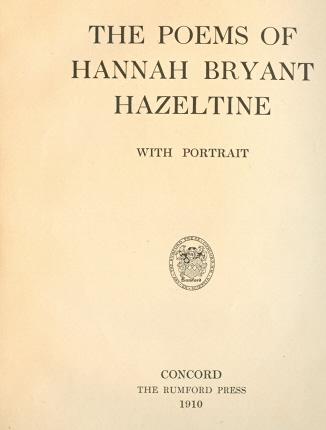
The biographical note on pages 1-2 included the following information:
‘Hannah Bryant Hazeltine was born in New Boston, NH, 20 August 1827. She was the youngest of a family of seven children born to Asa and Mehitable Snow Bryant, her father being in direct descent from Stephen Bryant, the first of the Bryant name to settle in the Old Colony in its early days. Philip Bryant, the father of William Cullen Bryant, the most noted member of the Bryant line, was first cousin to Asa Bryant ...
When about 19 years of age, in a literary society of which they both were members, Miss Bryant became acquainted with Miron J. Hazeltine, whom she afterward married. Being possessed of a good degree of poetical taste, Mr Hazeltine became interested in his wife’s intellectual pursuits and was of great assistance to her in some of her literary endeavors.
The first decade of their married life was spent in New York City, where Mr Hazeltine conducted a successful school, Mrs Hazeltine being his assistant and helper for the next two or three years ...
About the year 1862 Mr Hazeltine removed his family from New York City to New Hampshire, shortly afterward taking up his abode at The Larches, in Thornton, NH, which is the present residence of Mrs Hazeltine and still bears the name by her conferred upon it. ...
Mrs Hazeltine has four living children ...’
The book also contained these two photographs:
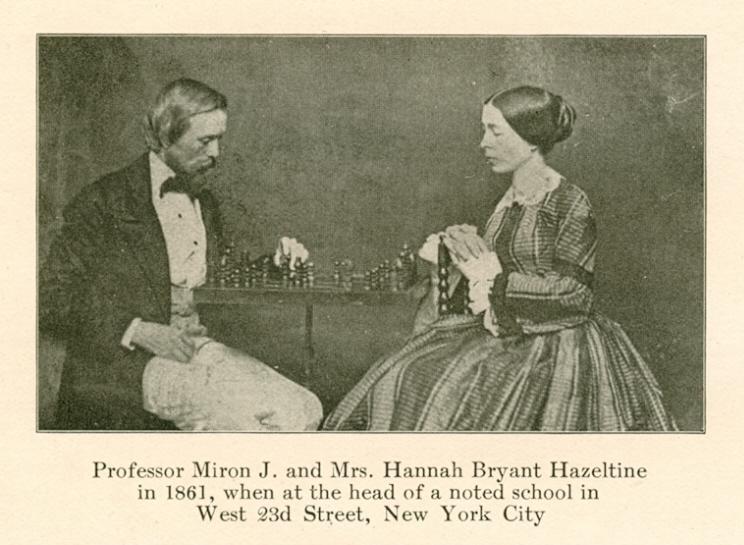
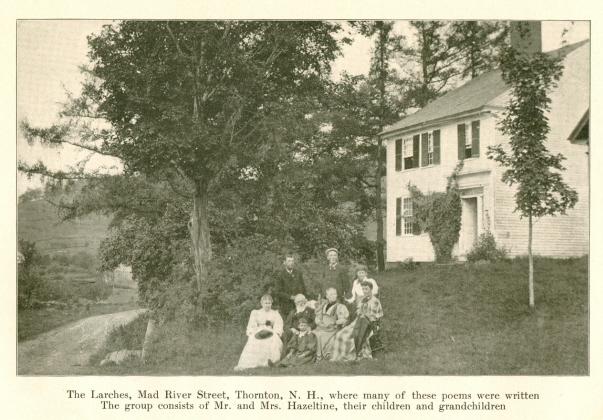
Finally for now, our copy of The Poems of Hannah Bryant Hazeltine contains a handwritten dedication by her:
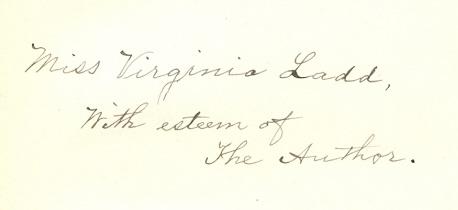
Gerd Entrup (Herne, Germany) raises the wider question of the earliest occurrence in play of the general ideas behind the Benko Gambit (not necessarily in the first few moves). He proposes Marshall v Réti, New York, 1924, which was annotated on pages 37-40 of Alekhine’s book Das Grossmeister-Turnier New York 1924 (Berlin and Leipzig, 1925) and on pages 18-20 of the English translation.
The game began 1 d4 Nf6 2 Nf3 g6 3 c4 Bg7 4 Nc3 O-O 5 e4 d6 6 Bd3 Bg4 7 h3 Bxf3 8 Qxf3 Nfd7 9 Be3 c5 10 d5 Ne5 11 Qe2 Nxd3+ 12 Qxd3 Nd7 13 O-O Qa5 14 Bd2 a6 15 Nd1 Qc7 16 Bc3

Réti played 16...Ne5, and Alekhine wrote: ‘Bereitet das folgende allzu kühne Bauernopfer vor – im Bestreben, gewaltsam remis zu vermeiden.’ [‘Preparing for the subsequent over-daring sacrifice of the pawn with the intention of avoiding a forced draw.’]
After 17 Qe2 b5 Alekhine commented:
‘Diesen Bauern konnte Weiß ruhig nehmen, da Schwarz Schwierigkeit gehabt hätte, dafür positionellen Ersatz zu erlangen, z.B. 18 c4-b5: a6-b5: 19 De2-b5:! c5-c4 (offenbar die beabsichtigte Pointe des Bauernopfers) 20 Lc3-e5: Lg7-e5: (oder 20...Tf8-b8 21 Db5-c6 Dc7-c6: 22 d5-c6: Lg7-e5: 23 Ta1-c1 Le5-b2: 24 Tc1-c4: mit Vorteil, da Schwarz den a-Bauern wegen 25 Tc4-c2 usw. nicht nehmen darf) 21 Sd1-e3 c4-c3 22 b2-c3: Dc7-c3: 23 Ta1-c1 und Weiß hätte zum mindesten ein sehr leichtes Remis gehabt. Nach der Ablehnung des Opfers wird er dagegen erst hart kämpfen müssen, um es zu erreichen.’ [‘White could safely have captured this pawn, as Black would have difficulty in obtaining positional compensation, for instance: 18 PxP PxP 19 QxP P-B5 (clearly the reason for the pawn sacrifice) 20 BxKt BxB (or 20...KR-Kt 21 Q-B6 QxQ 22 PxQ BxB 23 QR-B BxP 24 RxP with advantage, as Black dare not capture the QR pawn, on account of 25 R-B2) 21 Kt-K3 P-B6 22 PxP QxP 23 QR-B, and White would have had at least a very easy draw. After the refusal of the sacrifice, on the other hand, he can now reach that goal only after hard fighting.’]
The game continued 18 cxb5 axb5 19 f4 Nc4 20 Bxg7 Kxg7 and was drawn at move 50.
From C.H.O’D. Alexander’s Foreword (pages v-vi) to the anthology of prose and verse King, Queen and Knight by N. Knight and W. Guy (London, 1975):
‘... I should like to add one remark addressed especially to the stronger players. When we are soaked in chess, completely involved in its technicalities, we lose something; we forget what it was like when we first learnt this mysterious, inexhaustible, implacable art/game/science. Seeing chess – both in itself and in its numerous usages as an analogue of larger things – through the eyes of those who may be inexpert players but are highly articulate and intelligent men and women, we can perhaps regain some of the freshness of feeling that we once had.’
Miquel Artigas (Sabadell, Spain) has acquired an even better version of the Barcelona, 1929 illustration:
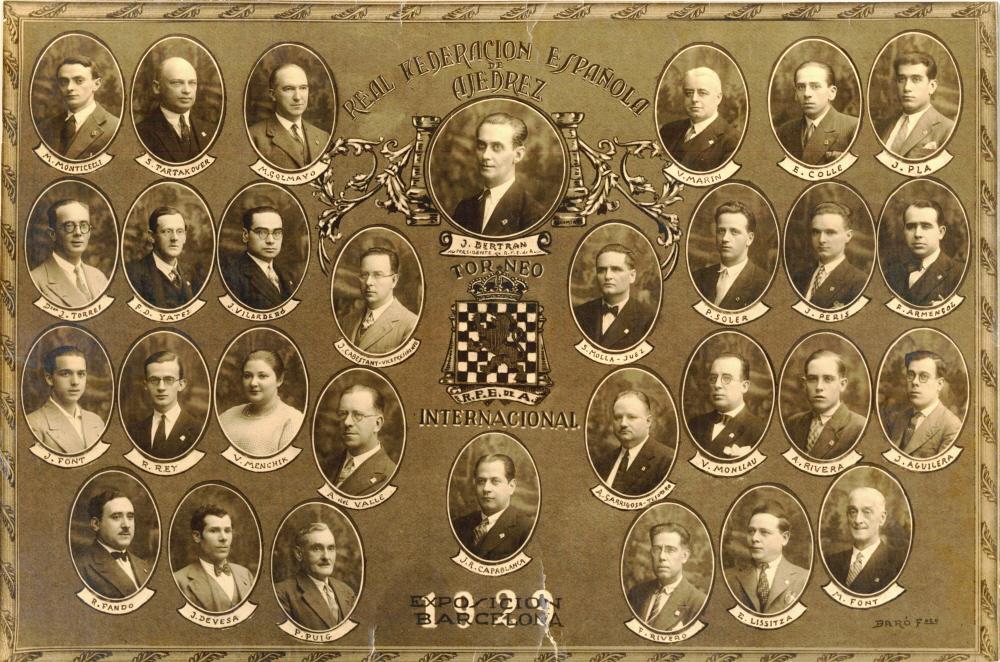
Below is a detail:
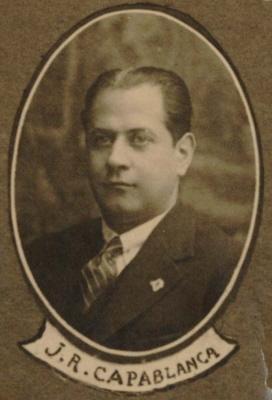
A surprising number of newspapers and chess magazines handled Fischer’s death in pedestrian fashion, with some not even bothering to pretend to bother. In contrast, three articles have, from our reading, stood out as being of permanent worth:
Further to C.N. 5457, Tim Bogan (Chicago, IL, USA) comments that if ‘general ideas’ is taken to mean that Black sacrifices a queen’s-side pawn for pressure on the opened files, the game Nimzowitsch v Capablanca, St Petersburg, 1914 may be regarded as an early model.
We add that Alekhine made a similar point about that game (describing it as ‘sensational’) in his notes to van Scheltinga v Opočenský, Buenos Aires, 1939. See pages 165-167 of Gran Ajedrez (Madrid, 1947) and pages 200-202 of 107 Great Chess Battles (Oxford, 1980).
The following quote appeared on page 14 of Chess Pieces by Norman Knight (London, 1949):
‘Intimate conversation without a word spoken; thrilling activity in quiescence; triumph and defeat, hope and despondency, life and death, all within sixty-four squares; poetry and science reconciled; the ancient East at one with modern Europe – that is chess.’
The book ascribed the quote to Professor John Holland Rose and commented:
‘With this short but finely phrased passage Professor Holland Rose has in 39 words contrived the perfect apotheosis of chess.’
What is the original published source of the apotheosis?
Professor J.H. Rose (1855-1942) is not to be confused with Professor H.J. Rose (1883-1961), who drew a cable game against Capablanca on 23 March 1907. The score was given by Bruce Hayden in an article, ‘What Happened to Rose?’, on page 27 of the January 1955 Chess Review, and on page 129 of May 1955 issue Leonard Barden addressed the question in the title:
‘Professor H.J. Rose recently retired from the Chair of Greek at St Andrews University. Chess has always been one of his hobbies, although naturally his preoccupation with his academic work has prevented him from playing much since his undergraduate days. He is a Canadian and was one of two Rhodes scholars from Quebec in 1904.’
Hayden ignored that information when his article was anthologized on pages 155-158 of Cabbage Heads and Chess Kings (London, 1960), leaving it to Harry Golombek to point out Rose’s subsequent academic career in the Foreword (page 7).
Regarding the discrepancy over Café Victoria and Café Veronika, Michael Lorenz (Vienna) writes:
‘In 1908 there was no Café Veronika in Vienna. The Café Victoria was located in Vienna’s fourth district (Wieden), Taubstummengasse 12.’
Our correspondent has provided the following excerpt from page 61 of Verzeichnis der Abonnenten und öffentlichen Sprechstellen des Telephonnetzes in Wien, (Vienna: K.K. Post- und Telegraphen-Direktion für Österreich, 1908):
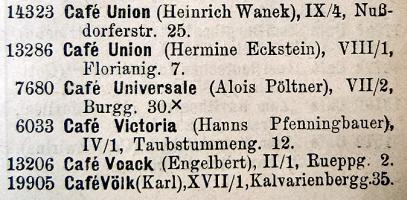
Brad Dassat (Oldham, England) notes that biographical information about R.F. Green was provided by John Saunders on pages 204-205 of the April 2005 BCM. On the basis of the National Probate Records index the article reported, in particular, that Green died in Algiers on 25 January 1925.
Before us lies a modern reprint of his 1889 book Chess, brought out by the Tynron Press, Stenhouse in 1990. Slothful, uninformed duplicators posing as publishers were referred to in C.N. 3586, and here is another instance. The reprint even perpetuates Green’s blunder (on page 108) of stating that in the Immortal Game Kieseritzky defeated Anderssen. (See C.N. 2469, on page 314 of A Chess Omnibus.)
From Rod Edwards (Victoria, BC, Canada):
‘Page 91 of the Illustrated London News, 24 January 1874 (not part of Staunton’s chess column) has an obituary of Henry Glassford Bell, largely quoted from the Glasgow Herald. It describes his positive effect on the Glasgow Chess Club after he took on its presidency in 1850:
“At this time the club was in a highly prosperous and satisfactory state, and there can be no doubt that its renewed vigour was principally attributable to the prestige and active interest taken in it by Sheriff Bell. Mr Staunton, the then champion of the world, was invited to Glasgow, and, after a brilliant display of his chess abilities, was honoured with a grand dinner, at which the Sheriff presided with that bonhomie, pleasant geniality, and wit and humour which distinguished him.”
A visit by Staunton to the Glasgow Chess Club was described on page 11 of the Illustrated London News of 3 July 1852 as taking place on “Monday, the 31st ult”. If this is indeed the visit referred to in the obituary of Bell, it is interesting in that it occurred a year after the international tournament in London, won by Anderssen; the author of the obituary in the Glasgow Herald would thus be claiming world champion status for Staunton after that time.’
We note that in 1852 the Chess Player’s Chronicle (pages 248-251) contained a report on Staunton’s visit to Edinburgh in early July that year. Two excerpts:
On the same topic, our correspondent Rod Edwards also comments:
‘In his March 2008 column at the Chess Café Tim Harding writes about Zukertort’s visit to Dublin in 1879 and cites the Irish Times of 6 March 1879:
“We may mention that since Mr Morphy gave up playing public chess, and since Herr Steinitz refused to engage in tournaments, Herr Zukertort is entitled to the rank of chess champion of the world, having taken first prize at the Paris tourney last year.”’
See too our updated feature article Early Uses of ‘World Chess Champion’.
Pages 229-230 of Kings, Commoners and Knaves and pages
343-344 of A Chess Omnibus discussed George H.
Derrickson and his famous miniature, dated 1860. Now, Marc
Hébert (Quebec, Canada) points out that the same moves were
given on page 231 of the November 1939 Chess Review as
having occurred in an offhand game Amateur v L. Newman, Chicago,
1939:
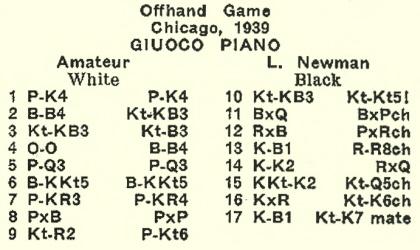
Below is an article from page 11 of our publication Chess Characters by G.H. Diggle (Geneva, 1984). It was originally published in the May 1976 issue of Newsflash.
‘Many eminent authorities (Richard Réti, Dr Lasker, Dr Euwe and C.H.O’D. Alexander) have written learnedly on the subject of Development of Chess Style. Much could be written on the subject of development (and constant changes in fashion) of the style of chess annotation. Broadly speaking, it is not unfair to say that our forefathers’ notes to games were “all style and no content” – for example, “Once more this unfortunate knight is driven bootlessly back to his old inglorious post” (Staunton) leaves the student quite as “bootless” in his search for enlightenment as the unfortunate knight in his quest for glory. This century, on the other hand, has produced notes of more content but not always much style – some modern annotators, though accurate and profound in their analysis, seldom produce any phrase totally unlike the last one. “A serious tactical error” – “A strategically incorrect appraisal of the situation – he gains some material by tactical means, but at the same time presents Black with some thematic counterplay”, etc. etc. etc.
There are recent signs, however, that amongst other modern horrors, the constant use of “Grandmaster” as a stopgap adjective is on its way out. This may be due partly to the age of galloping “Grandmaster” inflation that we now live in, and partly to the influence of Bobby Fischer, one of whose minor achievements has been to restore a few one or two syllable words to chess annotation, and to clear away much adjectival dead wood. Under his pen “a serious tactical error” becomes “a terrible boner” and a “grave strategical miscalculation” a “lemon”. “I felt the game was in the bag if I didn’t botch it” – “Black’s busted” – “Now it’s skin and bone” – “Petrosian made a wry face which looked to me like ‘Can Black do this and live?’” – “I’ve made this sacrifice so often that I feel like applying for a patent” – “Woozy, Tal stumbles into a dubious defence” – “Now the roof caves in” – “All Black’s pieces are stepping on each other’s toes”. And yet George Walker’s notes in Bell’s Life 140 years ago are strikingly similar: “This move spells destruction with the chill off, and sympathetic sighs from the spectators almost extinguish the candles” – “Watergruel were brandy compared with such catlap as this” – “Preston salts for two, waiter!” (this was at the end of a dull 50-move draw) – “Go where glory waits thee, may here be said to poor White, who ought to have pushed up rook’s pawn. Perhaps he meant to do it next time!”’
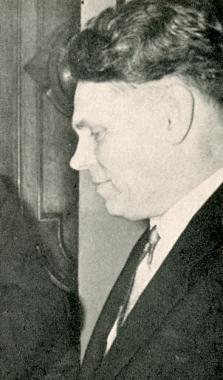
What event is depicted in this photograph?

Yakov Zusmanovich (Pleasanton, CA, USA) raises the subject of the earliest books on Petrosian and Korchnoi. He proposes the following:
We add that the Wildhagen book was published before Petrosian became world champion (it being briefly reviewed on, for instance, page 118 of the April 1963 BCM). Another early volume was Tigran Pétrosian champion du monde by A. O’Kelly (Brussels, undated, but 1963 or 1964).
John Bleau (Quebec, Canada) asks what the source is for the statement that Fischer had an IQ of about 180.
At present, the best we can offer is the following passage from page 22 of Profile of a Prodigy by Frank Brady (New York, 1973):
‘Recently, I spoke to a professor who used to work in the Grade Advisor’s Office at Erasmus Hall while Bobby was a student there.
“His IQ was in the 180s”, he said. “Give or take a point or two. He was definitely a ‘high’ genius, but with no interest or capacity for schoolwork.”’
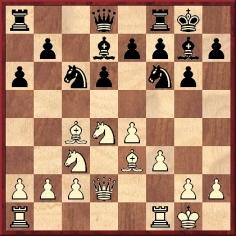
The above position arose after 1 Nc3 g6 2 e4 c5 3 Nf3 Bg7 4 d4 cxd4 5 Nxd4 Nc6 6 Be3 d6 7 Bc4 Nf6 8 f3 O-O 9 O-O Bd7 10 Qd2 a6 in the rapid game Shipman v Fischer, New York, 1971. See, for instance, pages 318-319 of volume three of Bobby Fischer (Madrid, 1993).
Eduardo Bauzá Mercére (New York, NY, USA) points out that the position after Black’s tenth move had occurred in the following game, from a four-college tournament:
N. Hull (Yale) – Frederick Bayard Barshell (Columbia)1 e4 c5 2 Nf3 Nc6 3 d4 cxd4 4 Nxd4 g6 5 Be3 Bg7 6 Nc3 Nf6 7 Bc4 d6 8 O-O O-O 9 f3 Bd7 10 Qd2 a6 11 a3 Rc8 12 Bb3 Kh8 13 Rad1 Kg8 14 Nd5 Nxd5 15 exd5 Ne5 16 Rfe1 Nc4 17 Bxc4 Rxc4 18 b3 Rc8 19 a4 (‘P-KR4’) 19...e5 20 dxe6 fxe6 21 c4 Be5 22 f4 Bxf4 23 Bxf4 e5 24 Bh6 exd4 25 Bxf8 Qxf8 26 Qxd4 Rc6 27 Rf1 Bf5 28 b4 Qc8 29 Rc1 Be6 (‘P-R3’) 30 b5 axb5 31 axb5 Rc5 32 Qxd6 Bf5 33 Qe7 Rxc4 34 Rxc4 Qxc4 35 Qxb7 Bd3 36 Qb8+ Resigns.
Source: The Sun (New York), 1 January 1903.
The opening (a ‘Rauzer Sicilian’) is to be noted. As indicated in the game-score above, at two points our correspondent has amended the moves given in the Sun, to make sense of the ensuing play.
For Black’s name, the newspaper report had both ‘Barshell’ and ‘Barshall’. The details we have incorporated in the game heading come from page 47 of Columbia University Alumni Register 1754-1931 (New York, 1932). His identity is confirmed by the report on the tournament in the New York Times, 30 December 1902.
‘Pierre-Charles Fournier de Saint-Amant’ is the most commonly seen version of the master’s full name, but equally respectable sources have ‘Fournié’. For example, whereas ‘Fournier’ was used in his obituary (La Stratégie, 15 December 1872, page 354), ‘Fournié’ appeared in a biographical article by William Wayte on pages 49-50 of the February 1892 BCM (accompanied by the illustration below).

We note now that a particularly weighty source also has ‘Fournié’. Pages 197-204 of the 15 November 1842 issue of Le Palamède, a periodical which Saint-Amant then owned, reproduced a lengthy legal document which referred to him as follows:
‘M. Pierre-Charles Fournié de Saint-Amant, directeur-gérant du journal le Palamède, demeurant à Paris, rue Saint-Thomas-du-Louvre, 42.’

Russell Miller (Camas, WA, USA) provides some information about the Hazeltines’ children, from the 1880 Federal Census:
Son: Robert E.L. (aged 16);
Daughters: Theodora (‘Theadra’) E. (13); Alice May (10); Louis P. (7).
Any details regarding Theodora will be particularly appreciated, since we possess a private letter written by her.
Pages 36-37 of the book referred to in C.N. 5456, The Poems of Hannah Bryant Hazeltine, had a composition headed ‘Fanny (1863) (An infant daughter who died 26 May 1863)’, and pages 38-39 presented the poem ‘Affliction’, in memory of another of the couple’s children who died young (James Bryant, on 9 May 1867).
Javier Asturiano Molina (Murcia, Spain) mentions that a figure of 184 was given, without substantiation, in two books by Pablo Morán. See the inside front cover of “Bobby” Fischer su vida y partidas (Barcelona, 1971/1972) and page 94 of Los niños prodigio del ajedrez (Barcelona, 1973).
‘Frank Greygoose has amassed the world’s finest private collection of chessmen and is considered second to none as an expert in a field in which few have specialized.’
That appeared in the blurb of his book Chessmen (London, 1979). Can a reader provide a note on him and/or his collection?

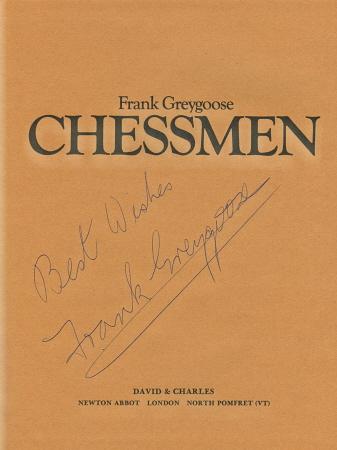
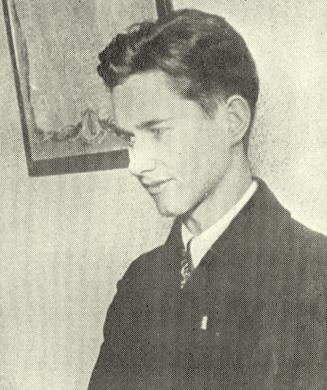
Paul Keres
In the context of Keres’ early correspondence chess a name frequently seen is ‘Wilkins’, and two games in which Keres was White have been widely published as follows:
1 e4 e5 2 f4 exf4 3 Nc3 Qh4+ 4 Ke2 Nc6 5 d4 d5 6 Nxd5 Bg4+ 7 Nf3 O-O-O 8 Kd3 f5 9 Nxh4 fxe4+ 10 Kxe4 Bxd1 11 Bd3 Re8+ 12 Kxf4 Bd6+ 13 Kg5 h6+ 14 Kf5 Nxd4+ 15 Kg6 Bxc2 16 Bxc2 Nxc2 17 Rb1 Ne7+ 18 Nxe7+ Rxe7 19 Nf5 Re6+ 20 Kf7 Kd7 21 Nxd6 cxd6 22 Bd2 Rhe8 23 Rbc1 R8e7+ 24 Kg8 Drawn.

1 e4 e5 2 Nc3 Nc6 3 f4 exf4 4 Nf3 g5 5 d4 g4 6 Bc4 gxf3 7 O-O Bg7 8 Bxf4 Bxd4+ 9 Kh1 Bxc3 10 Bxf7+ Kxf7 11 Qd5+ Kg7 12 Rxf3 Bf6 13 e5 Be7 14 Rg3+ Kf8
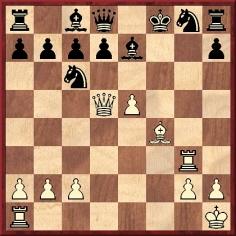
15 Rxg8+ Resigns.
They are usually dated circa 1933. In the case of the second game see, for instance, pages 86-87 of Paul Keres Chess Master Class by Y. Neishtadt (Oxford, 1983).
However, in articles entitled ‘Muntrationer från min korrespondenspraktik’ in the Swedish magazine Schackvärlden in 1935 (August, page 418 and September, page 522) Keres gave the conclusion of each game as follows:

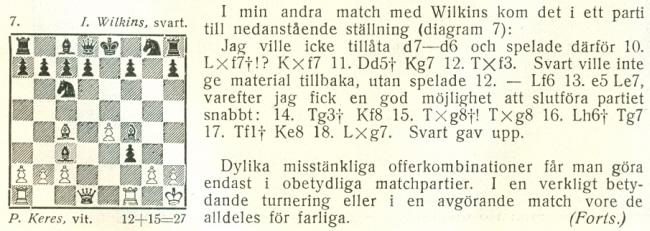
Page 168 of the July 1933 Deutsche Schachzeitung reported that Keres was successful in the correspondence match:
‘Pernau. Paul Keres-Pernau gewann einen Fernwettkampf gegen J. Wilkins mit +7 –1 =2 ...’
A position from a third game between the two players was given on page 207 of the July 1935 issue of the German magazine.
Although Keres too used the spelling ‘Wilkins’, the player in question was the Latvian Jānis Viļķins. The illustration below comes from Korespondencšahs Latvijā 1877-1944 by Ģ. Salmiņš (Liepāja, 2005):

This group photograph (Copenhagen, August 1934) was published on page 318 of Schackvärlden, September 1934. It was taken seven months before Nimzowitsch died, and we wonder whether it is the last picture of him.
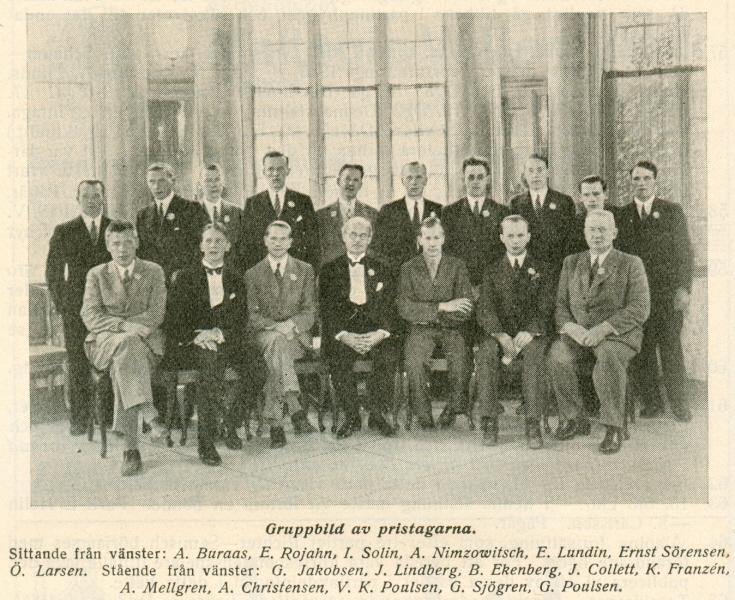
‘Error is the lifeblood of chess’, wrote C.J.S. Purdy on page 52 of the 1 March 1949 issue of Chess World concerning the following position:
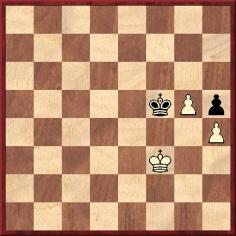
White to move.
The full paragraph was:
‘Error is the lifeblood of chess. Not only must the greatest masters inevitably make errors in play, but also writers in books – unless they confine themselves to exceptionally easy positions.’
After praising C.H.O’D. Alexander’s Chess (first published in 1937 and reissued in the 1940s), Purdy noted that Alexander had given the position on page 109 and the following solution on page 120:

On page 72 of his magazine Purdy commented:
‘Most errors in analysis arise through taking something for granted. In chess, you must always be taking something for granted, or you could hardly ever come to a decision at all – hence the inevitability of error. On move 7, Alexander has assumed as a matter of course that the white king will take the opposition. We are all taught that the opposition is the great desideratum in pawn endings. The trouble is that every generalization in chess breaks down – sometimes. Here White can win by deliberately giving Black the opposition, temporarily.
Thus, 7 K-K5! This enables White to force the win of the black pawn and win easily, e.g. 7...K-N2 8 K-B5 K-B2 9 P-N6ch, etc. Or 7...K-K2 8 P-N6.
After 7 K-B5 K-N2 the book says White has “nothing better” than 8 P-N6. This, again, is wrong; with a little shuffling, White can “change the move” and still win, e.g. 8 K-K5 K-B2 9 K-Q6 K-N2 10 K-K7 K-N3 11 K-K6 K-N2 12 K-B5, etc. Indeed, with the pawns as diagrammed, White can win no matter where the kings are.
But in the diagram, if you move all the pawns [and the kings, of course] one rank or two ranks nearer to Black’s side, then it really is a draw.
Here we have two paradoxes: (a) that taking the opposition on move 7 is bad, (b) that if White is nearer queening he is worse off. Both paradoxes arise because of the law of stalemate, which is itself paradoxical.
These draws nearly always involve a rook’s pawn. There is one exception. In the diagram move the pawns two ranks nearer Black’s side and one file to the left – still a draw. If you take all these statements for granted, they are well-nigh useless; all should be verified, which is quite easy, and you will then really benefit.’
It seems that Purdy’s correction did not come to Alexander’s attention, for the faulty solution still appeared on page 105 of the final edition of his book, Alexander on Chess (London, 1974).
A mirror image of the same pawn ending (demonstrated as a win) was given on page 42 of volume four of Comprehensive Chess Endings by Y. Averbakh and I. Maizelis (Oxford, 1987).
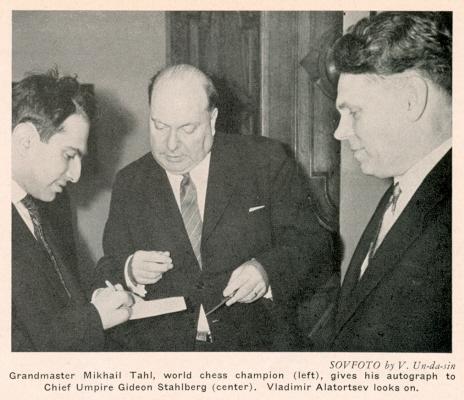
Source: Chess Review, May 1961, page 137.

Jim McKinney
We took this photograph from page 49 of Life, 2 May 1960. The feature, entitled ‘Big Campus Chess Game’, began:
‘In the new dorms which face each other across a quadrangle on the Berkeley campus, men and women students at the University of California found a ready-made gambit for getting acquainted. The 64 windows of the eight-story buildings made perfect 64-square chessboards. Cutting yard-high chessmen out of cardboard, the men set up an eight-story-high game in their windows and sent a challenge to the girls.
Their chessmen were lined up, with the girls’ along the top two floors and the men’s along the lower two. As each side made one move a day, the men toted the pieces up and down stairs to their proper window-squares. Though the girls had a better view of the complete board, the men won on the 37th play.’
It may be wondered whether there has ever been a larger chess ‘board’.
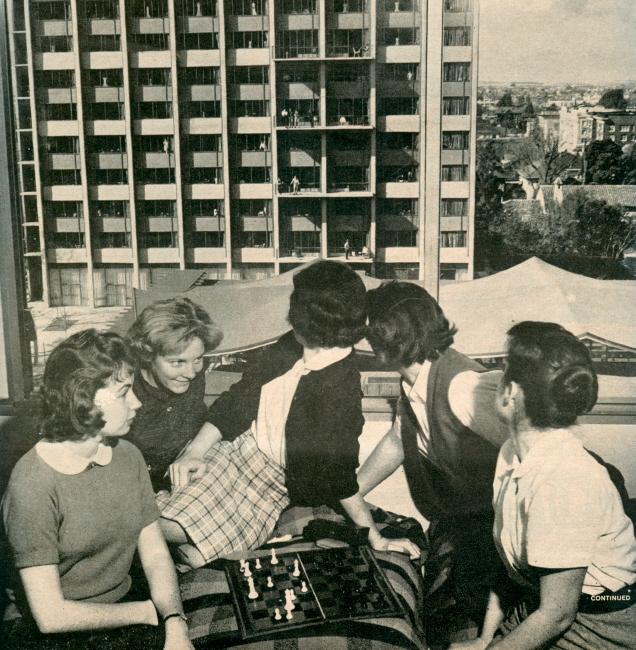
Per Skjoldager (Fredericia, Denmark) writes:
‘The picture published in Schackvärlden in 1934 is surely one of the last of Nimzowitsch – but not the last. The distribution of prizes took place before the banquet (as reported on page 319 of the Swedish magazine), and it may be assumed that the picture in C.N. 5478 was taken on that occasion. The caption reads: “Gruppbild av pristagarna” (Group photograph of the prize-winners).
I have a photograph of the tournament banquet at the Nimb restaurant which must have been taken a few hours later. Nimzowitsch is sitting at the main table on the left. On his right is I. O. Pedersen, the President of the Copenhagen Chess Federation.’
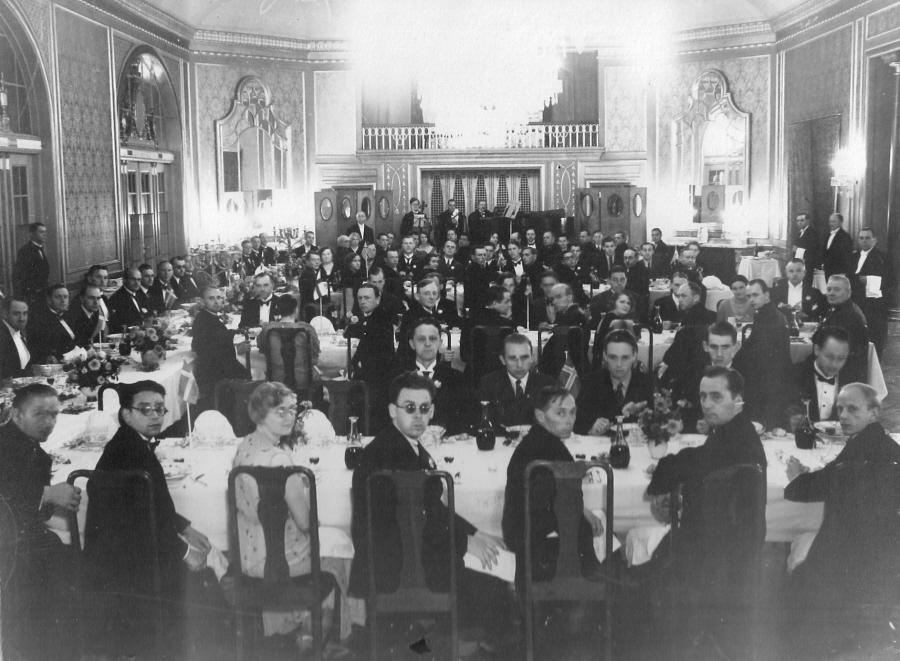

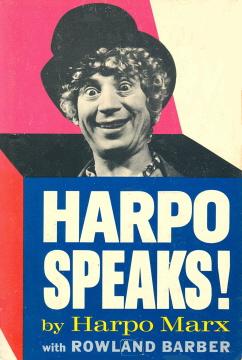
From pages 319-320 of Harpo Speaks! (New York, 1961), the autobiography of Harpo Marx:
‘One day when there was no matinee I ducked out and went looking for some kind of action. In front of a good-sized theatre, one I hadn’t been in yet, there was an unusually long line of people. The line wasn’t moving. No tickets were being sold. It had to be something sensational with this many people waiting for a chance to get in.
Since the day I bought my outfit at the government store I had become used to the idea that foreigners didn’t stand in line. I went up to the box office and waved a dollar bill in the window. The cashier grabbed the buck and gave me a ticket. Valootye – foreign currency – worked like magic in Moscow.
The house was packed, and noisy. Most of the audience were standing or walking around, chatting, drinking and eating. Others were sleeping or reading. I had apparently come in during the intermission. Yet the curtain was raised and the stage was lit. Oddest of all was the setting on the stage. There was a small table and a chair. On the table were two telephones, and a bunch of knickknacks. Behind the table was a large, tilted mirror.
It was the longest intermission I ever sat through. Fifteen minutes passed. Twenty minutes. Twenty-five. Nobody seemed to mind waiting that long for the next act.
Then a buzzer sounded. People damn near trampled each other to get back to their seats. In 30 seconds the theatre was silent as a tomb. Everybody was watching the empty stage.
A boy, maybe ten or eleven years old, walks out from the wings. He sits at the table. He picks up the receiver of one of the telephones. He listens for a while, then hangs up without saying anything. He moves one of the little props on the table. The joint is so quiet I can hear my wrist watch ticking. The boy moves another knickknack. A guy comes out, walks to the footlights, announces something to the audience, and the joint goes wild.
People jump to their feet. They yell and throw their hats in the air and embrace each other. The guy who made the announcement shakes hands with the boy and the cheers are deafening. This is absolutely the craziest show I ever saw.
Finally it dawned on me what I had been watching. A chess match.
The kid on the stage, I found out, had been playing the Polish chess champion and the Ukrainian champion, by long-distance telephone. It was nice to know the home team won, but it would have been nicer if I could have gotten my dollar back.’
A slightly abridged version of this text appeared on pages 206-207 of King, Queen and Knight by Norman Knight and Will Guy (London, 1975), where Harpo Marx’s dates were given as ‘1893-1965’ instead of 1888-1964. Knight and Guy added:
‘There seems to be some mystery about the identity of this Soviet boy prodigy.’
Can readers provide any information?
Maurice Carter (Fairborn, OH, USA) draws attention to this photograph on page 197 of Alt om Skak by B. Nielsen (Odense, 1943):
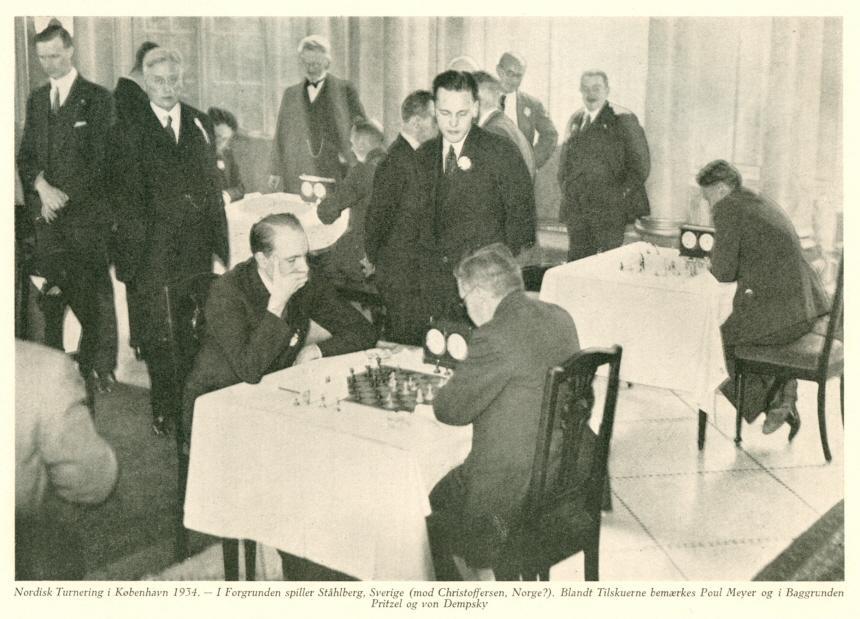
Our correspondent notes that Nimzowitsch is standing in the background. He also suggests that, in the photograph in C.N. 5482, the second person to Nimzowitsch’s right is Gideon Ståhlberg.
There follows a miscellany of items on the expression ‘J’adoube’, which was first mentioned by us in C.N. 36:
‘If “j’adoube” means “I adjust”, why is the verb adouber absent from most French dictionaries? The answer is simply that the word is now obsolete in all but the chess context. In the middle ages un adoubement was the ceremony at which a young noble was made a knight, received his arms, etc. By the eighteenth century adouber had been extended to mean “to equip, to arrange” and, subsequently, to “adjust” in chess. The next question is: how many people still say “j’adoube”? Is there a decline in the amount that nous adoubons?’
From page 6 of the October 1908 Chess Amateur:
‘What is the origin and history of the expression “j’adoube” as applied to chess?
In the revised British Chess Code we find the following rule: “A player, in his own turn to play, may adjust any man, provided that, immediately before touching it for adjustment, he gives notice of his intention to adjust that man.” (It’s unfair to require a dumb player to speak.) The origin is simple. A French player, when he wished to adjust a man, said “j’adoube”, and English players followed suit. Fifty years ago it was the custom of some people to spout scraps of French. These played a “partie”, took “en passant”, and did the “j’adoube”. “Game”, “in passing” and “I adjust” were too vulgar.’
What historical evidence exists for these assertions?
More generally, we shall appreciate any hard facts from readers on ‘J’adoube’ – or ‘J’Doube’ to borrow the spelling on page 2 of How to Play Chess Like an Animal by Anthea Carson and Brian Wall (Colorado Springs, 2007).
Information is sought, not least, on equivalent expressions in other languages. For example, do many Spanish players nowadays say ‘Compongo’ (the first person singular, present tense, of componer)? The following entry appeared in the ‘Vocabulario técnico’ on page 46 of Vademecum de ajedrez by Julio Ganzo (Madrid, 1972):
‘Compongo – Palabra usada cuando se va a tocar una pieza sin jugarla, con el objeto de centrarla en su casilla.’
The Small Chess Dictionary by Y. Averbakh (Belgrade, 1980) gave, on page 35, поправляю in Russian and Popravljam in Serbo-Croat.
Some ironic advice concerning ‘J’adoube’ was quoted in Land and Water of 28 June 1873 from the Liverpool Weekly Albion. See C.N. 54 (page 375 of Kings, Commoners and Knaves). In addition, a ‘j’adoube’ anecdote from Vienna, 1908 was reproduced from the American Chess Bulletin on page 313 of A Chess Omnibus.

C.N. 5470 referred to ‘Tigran Pétrosian champion du monde by A. O’Kelly (Brussels, undated, but 1963 or 1964)’. Dominique Thimognier (St Cyr sur Loire, France) shows that the book was published in 1963, since he possesses a copy inscribed by O’Kelly to his friend Eugène Guémard in December 1963:

Mr Thimognier also provides some additional information on the three-time champion of France:
‘Gromer remained in South America after the Buenos Aires Olympiad in 1939, and there are records of his participation in tournaments in Argentina and Brazil in 1940 and 1941. The date of his return to France is not yet known, but he played in the French championship in Rouen, 1947. Reminiscences by Robert Bellanger on page 233 of Echecs Français, October 1979 stated that Gromer died at the hôpital Sainte-Anne in Paris, a psychiatric institution, but no date was given.’
Gromer is seated on the far right in this photograph from page 188 of the July 1932 issue of El Ajedrez Americano:
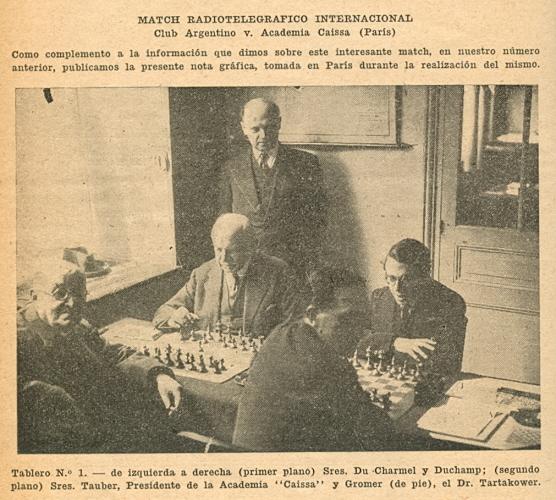
From the obituary of Howard Staunton on pages 232-234 of the August 1874 Huddersfield College Magazine:
‘... Mr Staunton had the sole charge of the weekly chess column in the Illustrated London News since its commencement in 1842, for which, if we are rightly informed, he received a very handsome stipend. Some idea may be formed of the labour which devolved upon him in this connection from the fact that his correspondence, as he himself stated to the writer of this article, averaged 700 letters weekly.’

Das Magazin (Zurich), 8-14 May 1999
Below is a list of the monographs about Anatoly Karpov in our collection:
Various aspects of Najdorf’s brilliancy against Glucksberg/Gliksberg have been discussed in C.N. over the years (see the entry for the Polish Immortal in our Factfinder), and an addition is offered here. Jan Kalendovský (Brno, Czech Republic) has drawn our attention to a Polish webpage Szwedzka Nieśmiertelna (‘The Swedish Immortal’) which discusses the similarities with a game between Robin Johansson and Hans Nilsson, published on pages 158-159 of the 2/2005 issue of Tidskrift för Schack. We are grateful to the Editor of TfS, Lars Grahn (Malmö, Sweden), for permission to reproduce the complete item here:
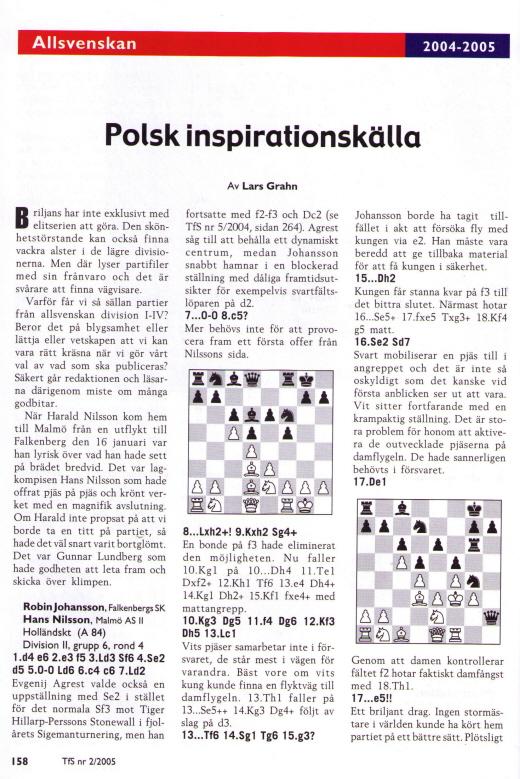

On this topic our thanks are also expressed to Calle Erlandsson (Lund, Sweden) and Tomasz Lissowski (Warsaw).
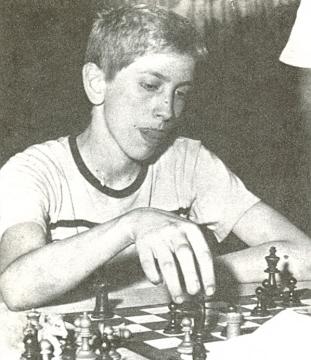
Bobby Fischer
‘The boy’s intelligence quotient has never been made public, but school authorities indicate that it is high in the upper percentile.’
This was written by Harold C. Schonberg in an article entitled ‘Fourteen-Year-Old “Mozart of Chess”’ in the New York Times, 23 February 1958. See page 51 of The Joys of Chess by Fred Reinfeld (New York, 1961), which reproduced the article.
John Townsend (Wokingham, England) notes that the Huddersfield College Magazine was incorrect to state that Staunton’s column in the Illustrated London News began in 1842, the right date being 1845.
Our correspondent forwards two quotes from the Illustrated London News:
‘We have great pleasure in announcing to our chess subscribers and readers generally that we have secured the valuable services of Mr Staunton, the eminent chessplayer, to edit the chess department of the Illustrated London News.’
‘“Scacchi”, Glasgow must be aware that the gentleman to whom he directs his comments is not in any way responsible for the errors which may be found in this department of our paper prior to 22 February ...’
From Robert John McCrary (Columbia, SC, USA):
‘The earliest mention of “J’adoube” that I have found is on page 3 of J.H. Sarratt’s A Treatise on the Game of Chess, volume I (London, 1808). He gives the 7th Law of chess as follows:
“When a player has touched a piece, he must move it, unless, at the moment of touching it, he should say ‘J’adoube’: if a piece be not placed exactly in the centre of its square, or if it should fall, the player must say ‘J’adoube’ in placing it properly; else, his adversary may compel him to play it.”
In George Walker’s A New Treatise on Chess (London, 1833), pages 16-17, the requirement to say “J’adoube” is given similarly as in Sarratt, but Walker states that it is “an obsolete expression, signifying ‘I adjust’ or ‘I replace’”.
Page 13 of William Lewis’ The Chess-Board Companion (London, 1838) has a very similar explanation.’
Paul Dorion (Montreal, Canada) notes that the French verb adouber is quite commonly seen nowadays when, for instance, a politician endorses a potential successor. Recent news headlines include ‘Bush adoube McCain’ and ‘Poutine adoube Medvedev’.
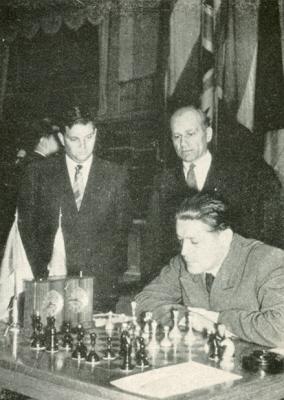
Our source names only two of the figures in this photograph.
| First column | << previous | Archives [44] | next >> | Current column |
Copyright: Edward Winter. All rights reserved.